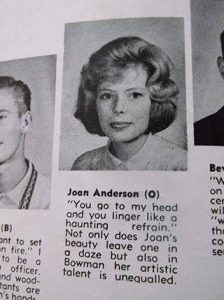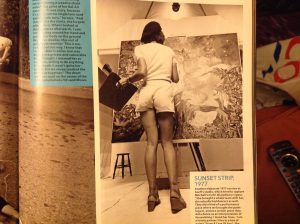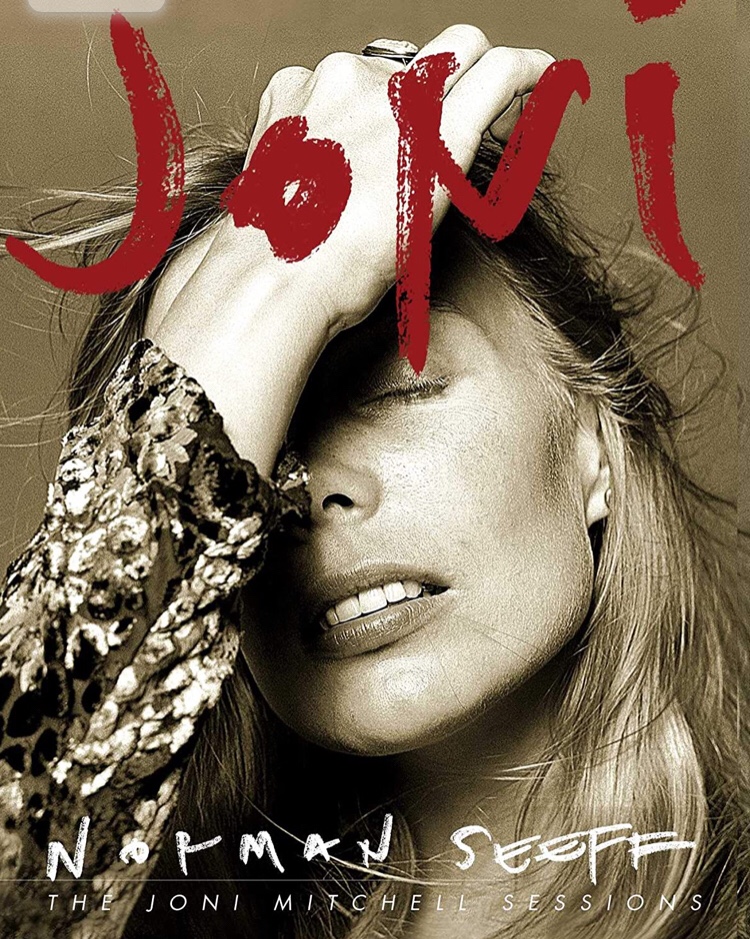
A while back, whilst researching one of my music writing projects, I exchanged several emails with Chris Dedrick (now sadly no longer with us) of The Free Design, in which we briefly discussed the Jungian idea of synchronicity, amongst other things.
Like Gordon Sumner, Dedrick was very positive about the idea of synchronicity. And so am I, today at least. It certainly felt like a big old dose of serendipitous synchronicity when, shopping in Sainsbury’s, I decided to look at the magazine section, something I almost never, ever do.

OnIy yesterday I had been listening to a two CD compilation of four John Sebastian albums. I look at the magazine racks, and there’s Joni Mitchell, one of my all time musical heroines, smiling down at me. And whose name is that next to hers? John Sebastian.
Sometime soon I’ll get into Sebastian, so to speak. But today it’s all about Joni. Sadly the free CD on the cover of this Mojo is not Joni Mitchell’s music, but ’15 songs inspired by the genius of Joni Mitchell’. Past experience teaches that this will be – my apologies to the artists concerned – deeply disappointing.
I don’t think any of the free CDs I’ve ever got from a music mag like this, Mojo, Uncut, or whatever, have been any good. A real shame, and a real missed opportunity this. What would’ve been far better would have been a collection of rare and unsual Joni recordings, of which there are plenty. But I guess that would have been a lot harder to arrange.

I’ve been meaning to move some posts over here from my ‘sounds from the funky goat’ music blog (now in stasis/limbo… i.e. pretty much defunkt!), including several Joni album posts. But on seeing this I’ve decided to start with a read and review of Mojo’s 22 page Joni special.
There’s a six-page 2004 interview, by Robert Hilburn (really three pages plus lots of pics and large-text captions), a piece with Norman Seeff and some of his Joni pics, and a series of chronological pieces by Victoria Segal, David Cavanagh, MoJo editor John Mulvey and Mat Snow, which range from covering her early days right up to the post-aneurysm wheelchair-bound present.

I guess Joni’s a tough gig for any journo, like other artists I love such as Tom Waits, Captain Beefheart or even, more recently, Lewis Taylor. And I found most of this writing not too great, focussing largely on the more obvious stuff [1], with very little new info’, for a long-time intense Joni junkie like me.
There’s a bit too much over-reverence for Blue. It is a great album by great artist at the peak of her powers, but I find it, taken as a whole, almost too cloyingly intense. And as a total listening experience I prefer most of her other albums from debut Song To A Seagull through to Hejira, after which they remain brilliant, but are more patchy.

The most interesting stuff here comes mostly from Joni herself, not surprisingly. I particularly like a quote from the Hilburn interview: ‘I believe a total unwillingness to cooperate is necessary to be an artist’. She actually clarifies this afterwards, and it seems to me that the word compromise could equally well (or better?) be substituted for cooperate.
Her critical stance on the modern music industry also rings true, as when she alleges that she overheard some music biz type saying that what was wanted nowadays was not talent, but ‘a certain look and a willingness to cooperate’. I think her choice of the word cooperate in her aforementioned quote was in reaction to this statement.
There are also a number of ‘Joni on Joni’ inserts, peppered throughout, in which Mitchell reflects on her ouevre. Again, these are more interesting by and large than the understandable but less insightful rhapsodies about her recorded work from the various journalists. But even then, they don’t offer as much insight as I hoped they might.

In relation to this, it seems to me that one of the common failures of interaction and understanding between artists and journalists is in how to interface, and specifically what approach to take. I have hoped that being both artist and writer myself that I might be better able to bridge such a gap. But on several occasions, for example when interviewing Brazilian singer Joyce some years ago, I was disappointed to discover this wasn’t necessarily so!
What I – and I imagine most readers of such stuff as this – really want is for the artist to simply open up, and talk about themselves and their lives, not necessarily their work. Although that is of course of interest. The notion that we want literal explanations of, let’s say, a particular lyric, whilst true on some levels, is also overly simplistic. The best writing on music is actually simply a form of cultural history. And that requires detail on context.

One little snippet of this does come to light here, when Joni explains, almost apologetically, how she came to write the lyrics for Amelia, on Hejira. Clearly she’s a bit worried about ‘unweaving the rainbow’, or demistyfying the creative process. Personally this doesn’t bother me at all, and is in fact encouraging for fellow aspiring artists.
But what’s more fascinating is to read about the overall context of this era, with Joni travelling across the U.S. How that relates to the melancholy and sense of wanderlust that’s so palpable on that album is even more interesting than the naked nuts and bolts of a songs particular genesis.

Still, at the end of the day, it’s great to see Joni being remembered and celebrated. I guess, in fairness to the artists on the free CD, I ought to take a listen to it. I’ll save that for tomorrow. In the meantime, I’ll go to bed with Joni… For The Roses, I think. A woman of heart and mind indeed.
* These pics aren’t in Mojo’s Joni feature.
NOTES:
[1] David Cavanagh kind of pissed me off by describing Barangrill as having ‘fuzzy emotional blankness’… eh? It’s one of the best tracks on a totally brilliant album. But hey, it’s all so subjective with music. Each to their own, I guess. I see jazz singer Mark Murphy is in my corner though, witness his superb cover of the song on his Mark Murphy II album.
[2] It’s interesting to note that Beefheart retired from music to concentrate on painting. Joni managed to pursue both in parallel, to some degree, although she also went the same way in the end.

Having just read a few Amazon UK reviews of Seeff’s Joni book, I feel disinclined to get it. For a book with a RRP of £75, even heavily discounted to closer to £45, it gets a slating: for bad design/layout – key pictures that disappear into the spine, for example – and minimal textual value. Also, I find that photographic stuff around ‘pop stars’ can often burst the bubble of my admiration for them, revealing them as preening narcissists, often looking pretty foolish. I’m not a fan of fashion magazines, and a lot of ‘pop photography’ steers too close to that whole arena of vacuity.

I use to follow your old funkygoat blog. You had a lot of good content especially the post about the second Earth Disciples album. What ever happened with that project?
Thanks Jay. I’m planning to move all my music related content over to this blog, as and when time allows/I can be bothered. Sadly nothing came of the whole Earth Disciples thing. I was in touch with the bassist and drummer. The other band members had already passed. I think since then the bassist, who worked for NASA, has also shuffled off the old mortal coil. There just wasn’t sufficient interest form anyone in a position to make anything happen. Sad, frankly. But their music lives on… sort of! And speaking of music, more generally, your comment is a spur for me to start moving the old material I have (and there’s tons of it, from several sources), over to this blog. I hope you’ll check back occasionally!? Cheers, Seb.
Hello! I’m sad to here about the Earth Disciples project I was seriously looking forward to hearing that project. I grew up on their debut album and still play it to this day! I really enjoyed the blog and look forward to seeing and hearing other projects you have in store. Thanks for getting back!